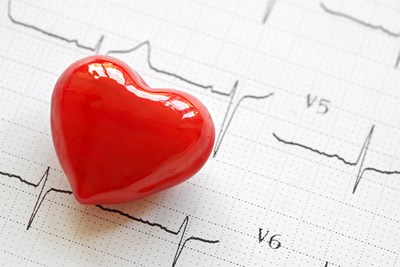Coronary artery disease (CAD), or atherosclerotic heart disease, is the most common type of heart disease—and one of the most deadly. It can take years for signs of its presence to appear.
While there are a variety of ways to prevent and treat CAD, the most effective is often a massive lifestyle change. Here is a look at a few terms to help you understand CAD.
1. Atherosclerosis
Atherosclerosis begins when an artery is damaged by underlying disease (like high cholesterol), unhealthy lifestyle choices (like obesity or smoking), or other things. A substance called plaque begins to build up in the arteries, making blood flow more difficult and ultimately leading to CAD.
2. Plaque
Plaque is a waxy substance that clogs the arteries. It’s a combination of cholesterol, calcium, fats, cell debris, and fibrin, a clotting agent. Plaque not only prevents blood from moving as efficiently, but it can also burst—resulting in the blood trying to clot and making an even bigger blockage in the veins.
3. Coronary Arteries
These are the arteries responsible for carrying blood rich with oxygen to the heart. Once plaque builds up and atherosclerosis reaches the coronary arteries, it becomes coronary artery disease, because the heart itself is losing out on oxygen-rich blood that can no longer move through the arteries as easily.
4. Ischemia
This is a condition where the blood flow is restricted and an area of the body doesn’t receive blood flow (and thus oxygen) the way it should. Cardiac ischemia refers exclusively to the reduced blood flow to the heart muscle, and it occurs because of atherosclerosis.
5. Angina
One of the warning signs that CAD is present is angina. There are several types of angina, but it is largely recognizable by the presence of chest pain, which may spread to the abdomen, arm, shoulder, or surrounding area. It generally occurs during periods of physical activity.
6. Echocardiogram
To figure out not only if you have CAD but also the extent to which the disease has progressed, there are a variety of tests available. An echocardiogram is a sonogram, or ultrasound, specifically for heart disease. It uses the echoes of high-frequency sound waves to map the heart in real time, allowing doctors to see areas that might not be functioning as strongly as they should be.
7. Electrocardiogram (ECG)
An ECG uses electrodes attached to the body to pick up and graph the heart’s electrical signals. It may be done in the office or by use of a “Holter monitor” over the course of 24 hours to allow a more prolonged view of what’s happening in the heart.
8. Angiogram
An overall healthy lifestyle is the best treatment and prevention of CAD, but some cases may require more intensive methods. An angiogram with cardiac catheterization is good for both diagnosis and treatment as well. A small balloon is inflated inside the artery, and a stent (a small mesh piece) may be placed to keep the vessel open.
9. Coronary Artery Bypass Surgery
If you have multiple arteries that have narrowed to the point of ischemia, it may be necessary to perform open heart surgery. Coronary artery bypass surgery involves grafting a blood vessel from somewhere else on your body and using it to “bypass” the blocked coronary artery, thus its name.
10. Heart Failure
Left untreated, CAD can result in heart failure of one or both sides. If this occurs, fluid may back up into the lungs and legs, and if other treatments are ineffective, a heart transplant may ultimately be necessary.



